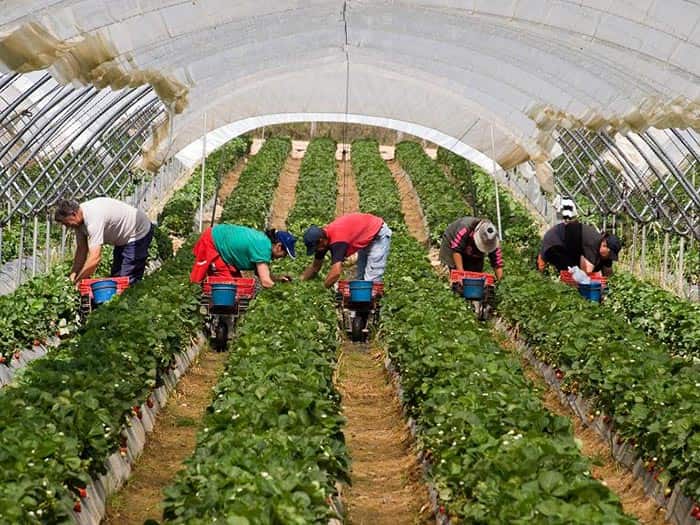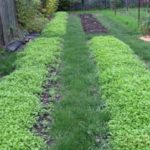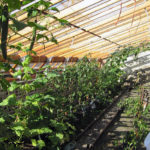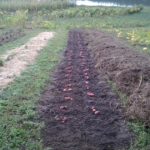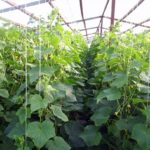Green manure is used in agriculture and on personal plots to fertilize the soil and improve its structure. This is a popular agricultural technique that increases productivity. In order for plants to bring maximum benefit, they must be planted correctly and on time. Let's consider when to sow green manure in a greenhouse in the fallhow to do it correctly. What varieties of green manure plants to choose for different types of crops.
What is it and what is it for?
Green manures are plants of certain types that are sown in fields and plots, and then mowed, left to overheat on the surface of the ridges, or embedded in the soil, where overheating also occurs. The green mass acts as an organic fertilizer; its quality can be compared to humus. In addition, the soil structure is improved and refined.
Green manure is not only a fertilizer: while it grows in the beds, it suppresses weeds, accumulates nitrogen near the roots, loosens the soil, saturates it with oxygen, reduces the number of pests, and stops the spread of diseases.
When to sow green manure in the fall in a greenhouse
In the fall, sowing seeds in a greenhouse should be done after the final harvest, when plant debris has been removed. Depending on the crop that grew under cover and the method - for digging or before winter - planting should be done at different times.
In order for green manure plants to gain enough mass to be incorporated into the soil, they need to be sown from the end of August to the end of September. At the end of October and November, sow seeds that will remain over the winter and germinate only in the spring.
What to plant?
Most types of green manure belong to the cruciferous and cereal families. But for certain crops in the greenhouse, certain green manure varieties are suitable. There are also restrictions: you cannot choose green manure and crops that belong to the same family, so as not to transfer diseases. If green fertilizer is used on the site for several seasons in a row, then you cannot plant the same plant; you need to alternate green manure species.
For tomatoes, peppers and eggplants
For representatives of the nightshade family, legumes, cereals and cruciferous vegetables are good predecessors.You can also sow phacelia, goat's rue, lupine, and buckwheat. Any of these plants can increase the yield of popular garden crops by a third. And when planting seedlings in the soil where green manure previously grew, it will protect it from pests.
After nightshades, it is recommended to sow radish, mustard, and phacelia. Plants will clear the soil of late blight pathogens and fill it with nitrogen.
For cucumbers
Cucumbers have a shallow root system; they take nutrition from the top layer of soil, so it should be the most fertilized. It is permissible to plant almost all common green manure crops under this crop in a greenhouse. From spring and throughout the summer, you can also sow plants between the rows. This will only improve the taste of the cucumbers. It is not recommended to sow rye before the crop. It is believed that it suppresses not only weeds, but also cucumbers.
For other crops
In a greenhouse in the fall, you can sow any green manure if they can sprout and grow 15-20 cm before the arrival of cold weather. If you plan to leave green shoots over the winter, then you can sow winter cereals. You can also mix seeds of different crops and sow at the same time. The benefit from the mixture will be greater, since all plants act on the soil differently and accumulate elements in different proportions. This will allow you to universally prepare the land for different crops.
How to sow green manure correctly
First you need to prepare the beds in the greenhouse. Remove all remaining stems, roots and tops from the previous crop. Take everything outside and burn it. Dig up the ground, select the roots of the weeds. Level the soil, sow green manure to a depth of 3-4 cm. Water with water and sprinkle with a thin layer of soil.Compact the soil a little. Sprinkle with a layer of humus, which will help the plants grow faster.
When sowing before winter, you need to scatter the seeds more densely; some of them may not survive the winter.
In frosty weather, if the plants in the greenhouse remain uncut, they are covered with snow. In spring, crops need to be sown when at least 2 weeks have passed after harvesting the green manure. This is necessary so that they begin to rot in the soil and feed the seedlings.
Green manure in a greenhouse is an excellent way to prepare and fertilize the soil, clean it of pathogens and harmful insects, and improve the structure of the soil. Experts advise sowing green manure plants in a greenhouse for at least 3-4 years in a row to see the results and consolidate them.



